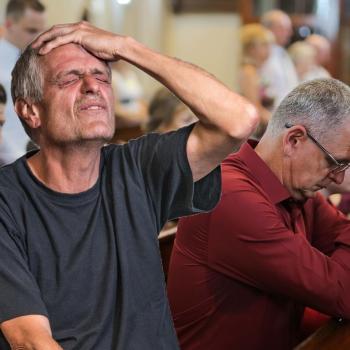In recent news, the Notre Dame Cathedral in Paris, France had caught fire and sustained significant damage. Although tensions are high in France due to an increase in terrorist attacks and anti-Catholic church vandalism, initial reports believed the source of the fire came from the construction site of the building. The 860-year-old church had been undergoing long-overdue restoration as it began to show its age.
This horrible event reminds me of an incident that hit close to home more than a decade ago. The Evangelical church I was attending at the time was undergoing roof renovations, and the construction crew had accidentally left a propane torch ignited – causing the roof tar to light on fire. Luckily, the fire department arrived before the flames could spread to the the rest of the building. In spite of a leaky roof and a few ceiling boards hanging in the foyer, the church was still usable. Sunday services were still up and running and the congregation still had a place to gather in. Surely this situation could have been a hell of a lot worse.
Although the roof of my former church was easily repaired, the fire could have easily consumed the entire building had it not been put out on time. This would have forced the congregation to find a different means to gather on Sundays. It would be difficult for roughly 200 people to meet in someone’s house. Though the option to rent a hall or school gymnasium would have been one of the more readily available options.
In the case of Notre Dame, the damage was far more extensive. The roof and spire, constructed of 400-year-old wood at the time it was built, had collapsed while engulfed in flames. But to everyone’s surprise, the main structure of the building as well as the high altar, the Pietà and the stained-glass Rose Windows remained unaffected. And thankfully, the Eucharist and many of the relics had been rescued from the burning building thanks to some heroic efforts.
The Church Is Not Just A Building
These incidents make me realize how fragile the work of human hands really is. All things which take years to build up can easily be destroyed in a matter of minutes. In the wake of Notre Dame’s fire, I feel prompted to write what I’ve been thinking about for a long time…
What if the Catholic Church were suddenly wiped from the face of the earth? What would happen if all the church buildings were suddenly destroyed? Interestingly enough, I still happen to have my first prayer book from when I received my First Communion. Within the first few pages, it reads:
“The Church is far more than just buildings. The Church is made up of people, men, women and children whose souls are marked with the sign of Baptism. Even if all church buildings were destroyed, the Catholic Church would be still alive. It would live in the hearts of its people. We call the love and devotion people have in their hearts for God, the invisible Church on earth.”
From a Protestant perspective, there is far less attachment to the actual building of a place of worship. The reasoning behind this mentality is they emphasize God is not bound by the walls of a manmade structure. As for Catholic worship spaces, the building itself is more than just a gathering place. It is a house that contains the Real Presence of Christ in the Eucharist, similar to how Solomon’s Temple sheltered the Holy of Holies.
Thus, it can be said the differences in theology between both groups are most reflected in the choice of architecture. While some claim exterior appearances do not matter since God judges what lies within, I would argue it does matter.
Modernist Construction Does Not Leave A Lasting Impression
The difference with modern building materials is they are mass-produced, generally cheaper, readily available and slap together efficiently. Repairing the damage done to historical buildings, especially one that dates back almost a millennia, is not an easy undertaking. But as the old cliché says, you get what you pay for. If someone wants a quick and easy fix, it will likely have to be repaired again in the near future. But if extra money and effort is invested into quality building materials, the more likely the building will last longer. With that in mind, a passage from Scripture crossed my mind,
“For no other foundation can any one lay than that which is laid, which is Jesus Christ. Now if any one builds on the foundation with gold, silver, precious stones, wood, hay, stubble— each man’s work will become manifest; for the Day will disclose it, because it will be revealed with fire, and the fire will test what sort of work each one has done. If the work which any man has built on the foundation survives, he will receive a reward. If any man’s work is burned up, he will suffer loss, though he himself will be saved, but only as through fire.” — 1 Corinthians 3:11-15 RSV
This passage is one of the Catholic references to purgatory, but I think it eerily reflects the theology of architecture. Notre Dame has survived revolutions in France as well as bombings in both the First and Second World War. The fire may have consumed much of Notre Dame’s wooden roof and spire, but the stone structure still remains. A church residing in a modern, commercial building is far less likely to leave such a lasting impression. Having a structure made of solid stone has definitely proven itself advantageous!
In the midst of Holy Week, what started as a dark day for Catholics around the world has a splinter of hope. We can meditate on Christ’s Passion and come to the realization that the Church is not only a living organism, but a Rock as well. And just as Christ died and rose again, we can hope the Notre Dame cathedral will one day be restored in a more glorified state.
Buildings may crumble and fall, but no fire is more powerful than the one burning within the hearts of the faithful.











